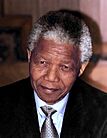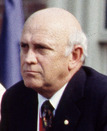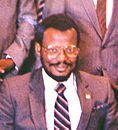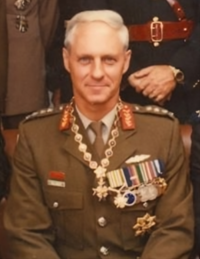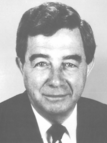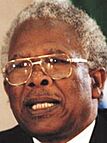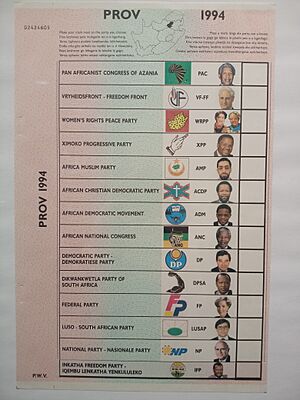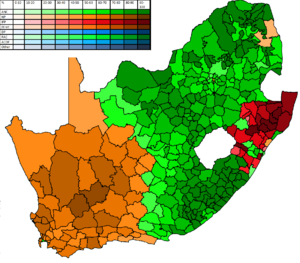1994 South African general election facts for kids
Quick facts for kids |
|||||||||||||||||||||||||||||||||||||||||||||||||||||||||||||||||||||||||||||
|
|||||||||||||||||||||||||||||||||||||||||||||||||||||||||||||||||||||||||||||
|
|
|||||||||||||||||||||||||||||||||||||||||||||||||||||||||||||||||||||||||||||
|
All 400 seats in the National Assembly 201 seats needed for a majority |
|||||||||||||||||||||||||||||||||||||||||||||||||||||||||||||||||||||||||||||
|---|---|---|---|---|---|---|---|---|---|---|---|---|---|---|---|---|---|---|---|---|---|---|---|---|---|---|---|---|---|---|---|---|---|---|---|---|---|---|---|---|---|---|---|---|---|---|---|---|---|---|---|---|---|---|---|---|---|---|---|---|---|---|---|---|---|---|---|---|---|---|---|---|---|---|---|---|---|
|
|||||||||||||||||||||||||||||||||||||||||||||||||||||||||||||||||||||||||||||
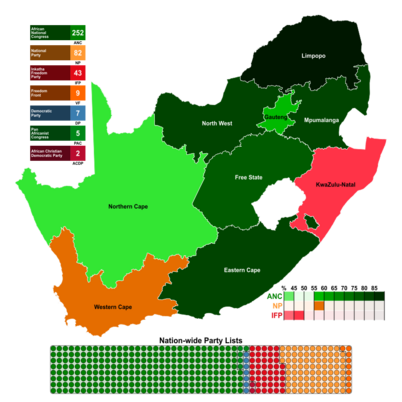 |
|||||||||||||||||||||||||||||||||||||||||||||||||||||||||||||||||||||||||||||
|
|||||||||||||||||||||||||||||||||||||||||||||||||||||||||||||||||||||||||||||
The 1994 general elections in South Africa were a huge moment in the country's history. They took place from April 26 to 29, 1994. These elections were the first time that people of all races in South Africa were allowed to vote. This meant everyone, no matter their skin color, could take part in choosing their leaders. This historic event marked the end of a long period called apartheid.
Millions of people waited in long lines for four days to cast their votes. In the end, over 19 million votes were counted. As many expected, the African National Congress (ANC) won by a lot. They received 62 percent of all votes. The ANC teamed up with other groups like the COSATU and the South African Communist Party (SACP).
Because of the election rules, the ANC formed a "Government of National Unity." This government included the National Party and the Inkatha Freedom Party. These were the two other parties that won many seats in the National Assembly. The first thing the new National Assembly did was choose Nelson Mandela as the President. He became the country's first black leader.
Today, April 27 is a special day in South Africa called Freedom Day. It is a public holiday that celebrates this important election.
Contents
Why Was This Election So Important?
What Was Apartheid?
To understand why the 1994 election was so special, you need to know about apartheid. This was a system of racial segregation that started in South Africa in 1948. It meant that white people had all the power and control.
- Separation by Race: The government put all South Africans into different groups: White, Black, Coloured (mixed race), or Indian.
- Voting Rights: Only white people could vote.
- Land and Relationships: Most of the country's land was set aside for white people. It was also against the law for people of different races to marry or have relationships.
- Citizenship: Black South Africans lost their citizenship. They were made citizens of special areas called "bantustans," which were like separate territories for different black ethnic groups.
Many countries around the world spoke out against apartheid. By the 1980s, South Africa faced big problems. There was a lot of fighting inside the country. The economy was struggling because other countries refused to trade with South Africa. All these problems made the government realize they had to change.
In 1989, F. W. de Klerk became the new President. On February 2, 1990, he made a surprising speech. He announced that he would allow anti-apartheid groups, like the ANC, to operate again. He also promised to release political prisoners, including the famous ANC leader Nelson Mandela. Just nine days later, on February 11, Nelson Mandela was set free after 27 years in prison.
How Did South Africa Change?
After Mandela's release, leaders from the ANC and the government began to talk. These talks were difficult and sometimes stopped because of violence. However, both sides were determined to find a peaceful way forward.
- Early Talks: Mandela and de Klerk met to discuss how to end political violence.
- Peace Accord: Many groups signed the National Peace Accord in 1991. This agreement set rules for political parties and security forces to help solve conflicts peacefully.
- CODESA Meetings: Important meetings called the Convention for a Democratic South Africa (CODESA) began in December 1991. Here, groups discussed how to create a new constitution and a temporary government. Most groups agreed that South Africa should be a united country where everyone had the same citizenship.
- Referendum: In 1992, white voters had a special vote (a referendum). They were asked if they wanted the negotiation process to continue. A large majority (68.3%) voted "Yes," showing support for ending apartheid.
- Multiparty Negotiations: In 1993, a new conference called the Multiparty Negotiating Process started. Many different organizations joined these talks.
- New Constitution: By November 1993, an interim constitution was agreed upon. This new constitution set the date for the first non-racial elections: April 27, 1994.
Voting Day Challenges
Even though the election was set, there were still challenges.
- Last-Minute Decision: The Inkatha Freedom Party (IFP) first said they would not take part in the election. But just days before voting, on April 19, they changed their minds. Their name had to be added to the ballot papers using stickers.
- Long Lines: In many rural areas, where there wasn't much infrastructure, people waited for days to vote. This showed how eager everyone was to finally have their say.
- No Participation: Some pro-apartheid parties, like the Conservative Party, chose not to take part in these new elections.
Election Results: Who Won?
National Assembly Results
The National Assembly has 400 members. These members are chosen based on how many votes each party gets across the country.
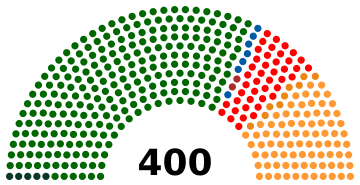 |
||||
| Party | Votes | % | Seats | |
|---|---|---|---|---|
| African National Congress | 12,237,655 | 62.65 | 252 | |
| National Party | 3,983,690 | 20.39 | 82 | |
| Inkatha Freedom Party | 2,058,294 | 10.54 | 43 | |
| Freedom Front | 424,555 | 2.17 | 9 | |
| Democratic Party | 338,426 | 1.73 | 7 | |
| Pan Africanist Congress | 243,478 | 1.25 | 5 | |
| African Christian Democratic Party | 88,104 | 0.45 | 2 | |
| Africa Muslim Party | 34,466 | 0.18 | 0 | |
| African Moderates Congress Party | 27,690 | 0.14 | 0 | |
| Dikwankwetla Party | 19,451 | 0.10 | 0 | |
| Federal Party | 17,663 | 0.09 | 0 | |
| Minority Front | 13,433 | 0.07 | 0 | |
| Sport Organisation for Collective Contributions and Equal Rights | 10,575 | 0.05 | 0 | |
| African Democratic Movement | 9,886 | 0.05 | 0 | |
| Women's Rights Peace Party | 6,434 | 0.03 | 0 | |
| Ximoko Progressive Party | 6,320 | 0.03 | 0 | |
| Keep It Straight and Simple Party | 5,916 | 0.03 | 0 | |
| Workers' List Party | 4,169 | 0.02 | 0 | |
| Luso-South African Party | 3,293 | 0.02 | 0 | |
| Total | 19,533,498 | 100.00 | 400 | |
| Valid votes | 19,533,498 | 99.02 | ||
| Invalid/blank votes | 193,112 | 0.98 | ||
| Total votes | 19,726,610 | 100.00 | ||
| Source: African Elections Database | ||||
Senate Results
The Senate had 90 members, with 10 from each of the nine provinces. These members were chosen by the newly elected provincial governments.
Seats in the Senate after the 1994 provincial elections
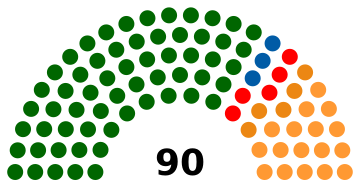 |
|||||||||||||
| Party | EC | FS | G | KZN | M | NW | NC | NP | WC | Total | |||
|---|---|---|---|---|---|---|---|---|---|---|---|---|---|
| African National Congress | 9 | 8 | 6 | 3 | 8 | 8 | 5 | 10 | 3 | 60 | |||
| National Party | 1 | 1 | 2 | 1 | 1 | 1 | 4 | 6 | 17 | ||||
| Inkatha Freedom Party | 5 | 5 | |||||||||||
| Freedom Front | 1 | 1 | 1 | 1 | 1 | 5 | |||||||
| Democratic Party | 1 | 1 | 1 | 3 | |||||||||
| Total | 10 | 10 | 10 | 10 | 10 | 10 | 10 | 10 | 10 | 90 | |||
| Source: Constitution of South Africa | |||||||||||||
In 1997, the Senate changed its name to the National Council of Provinces. Its members were then divided into permanent and special delegates.
What Happened After the Election?
The 1994 election was a huge step for South Africa. It showed the world that the country was moving towards democracy and equality.
- Freedom Day: As mentioned, April 27 is now a national holiday called Freedom Day. It celebrates the first democratic election and the end of apartheid.
- A New Beginning: The election helped prevent more conflict in South Africa. It brought different groups together to build a new, fairer country.
- Challenges: Some people involved in the election, like Steven Friedman, who worked for the Independent Electoral Commission, said that counting all the votes accurately was very hard. There were many claims of cheating. He said the election was a "technical disaster but a political triumph." This means that while the counting process might have been messy, the election itself was a huge success for peace and democracy. The final results were likely a compromise that helped avoid a civil war.
See also
 In Spanish: Elecciones generales de Sudáfrica de 1994 para niños
In Spanish: Elecciones generales de Sudáfrica de 1994 para niños


